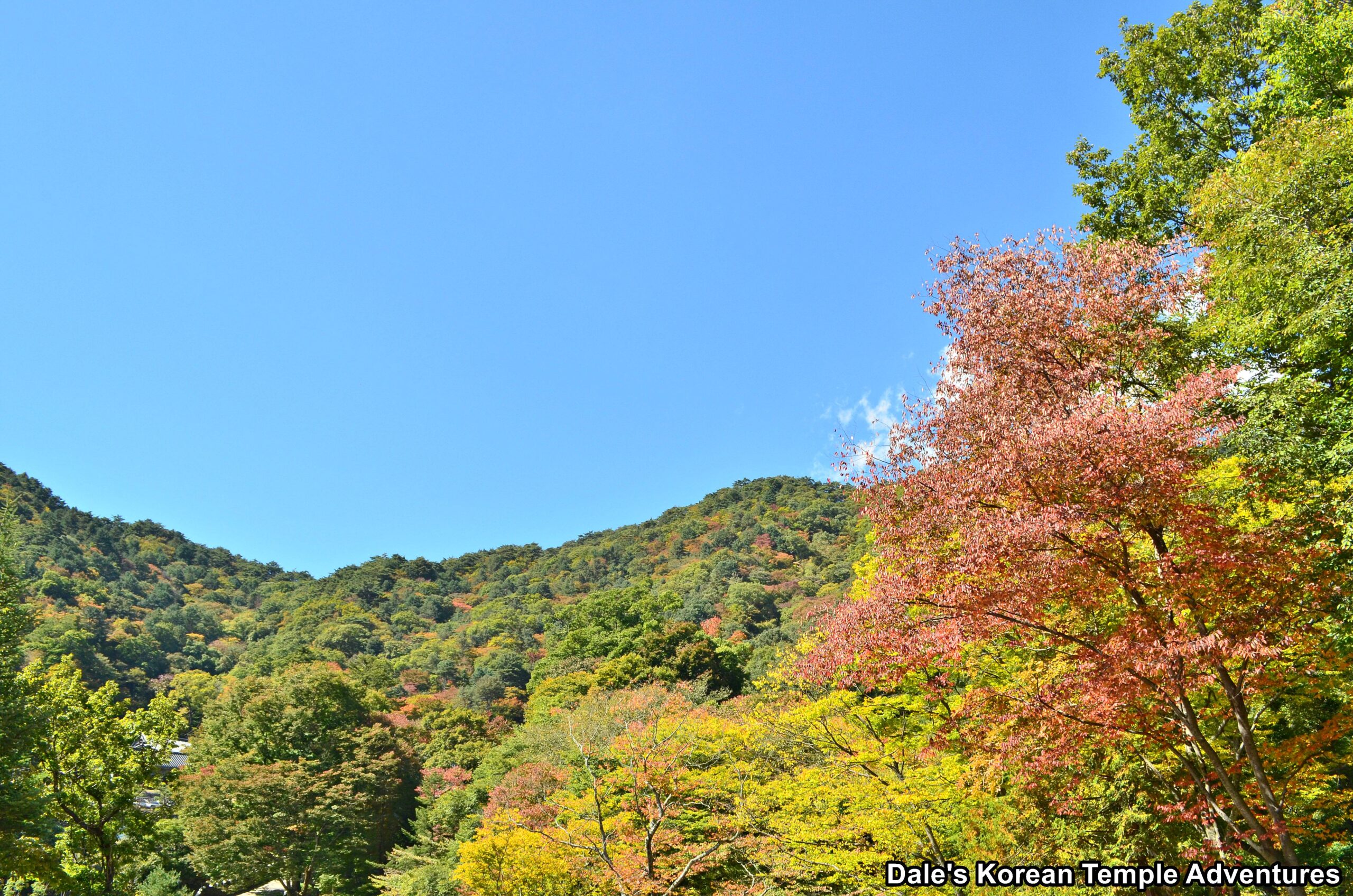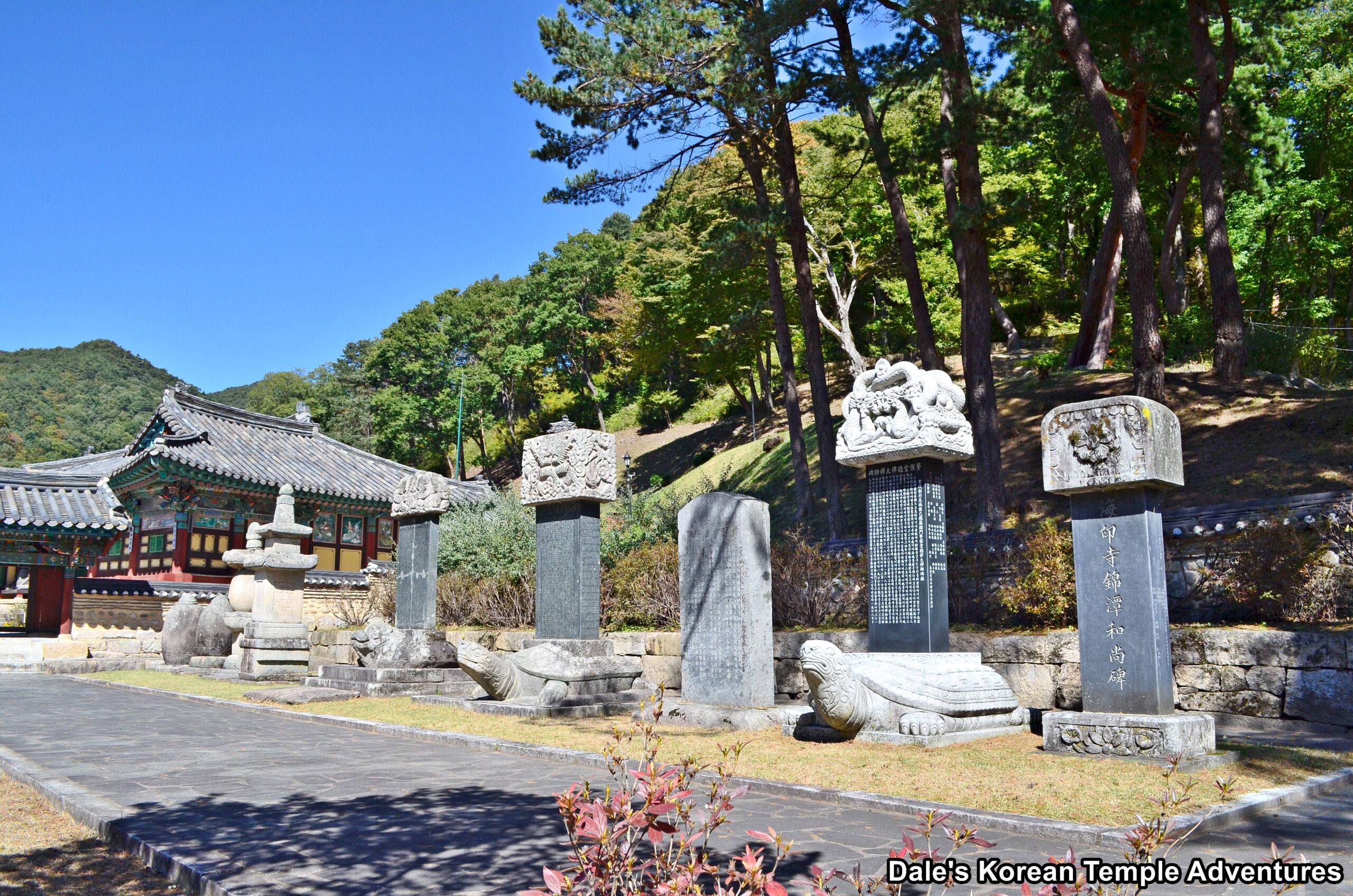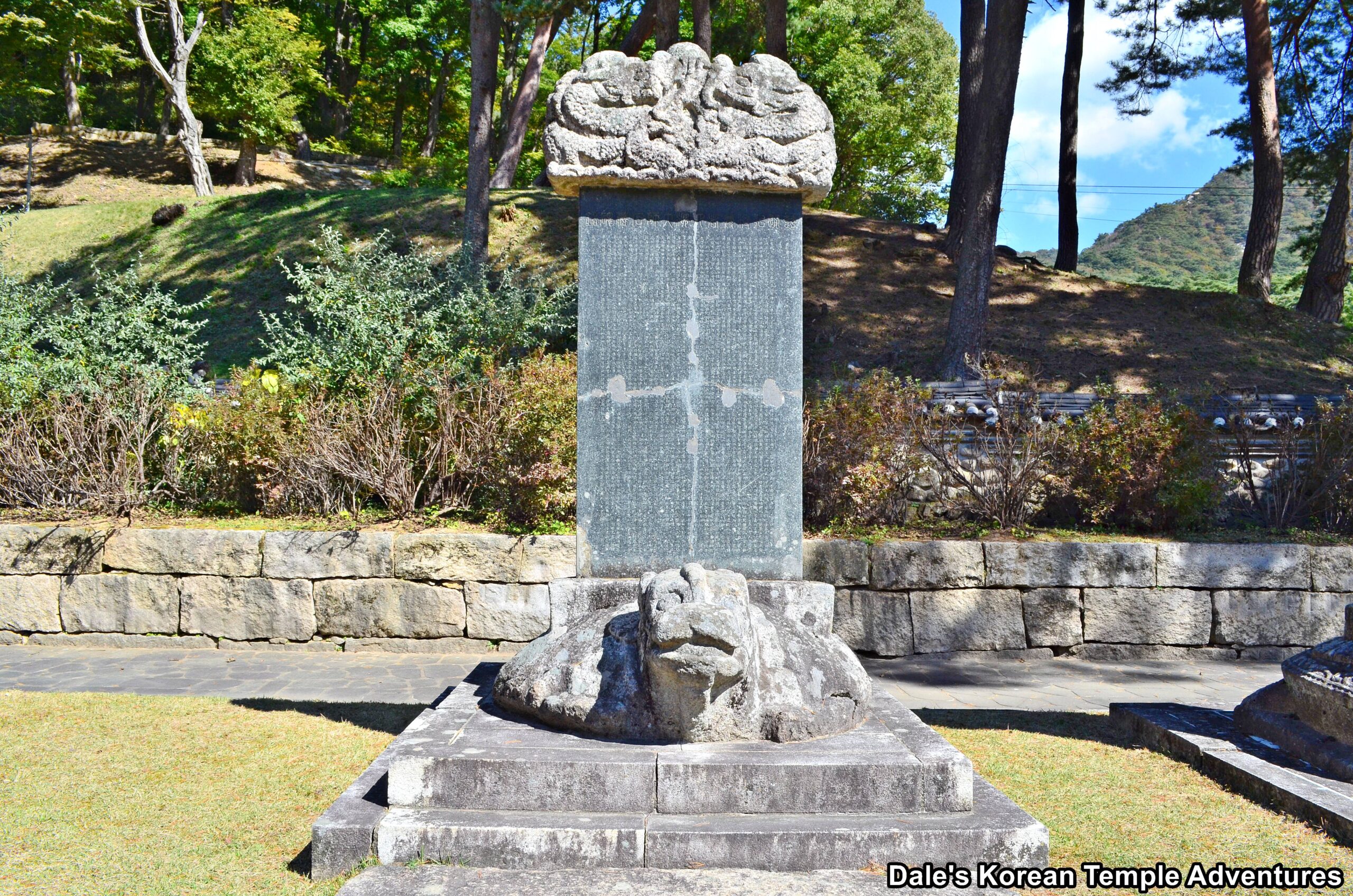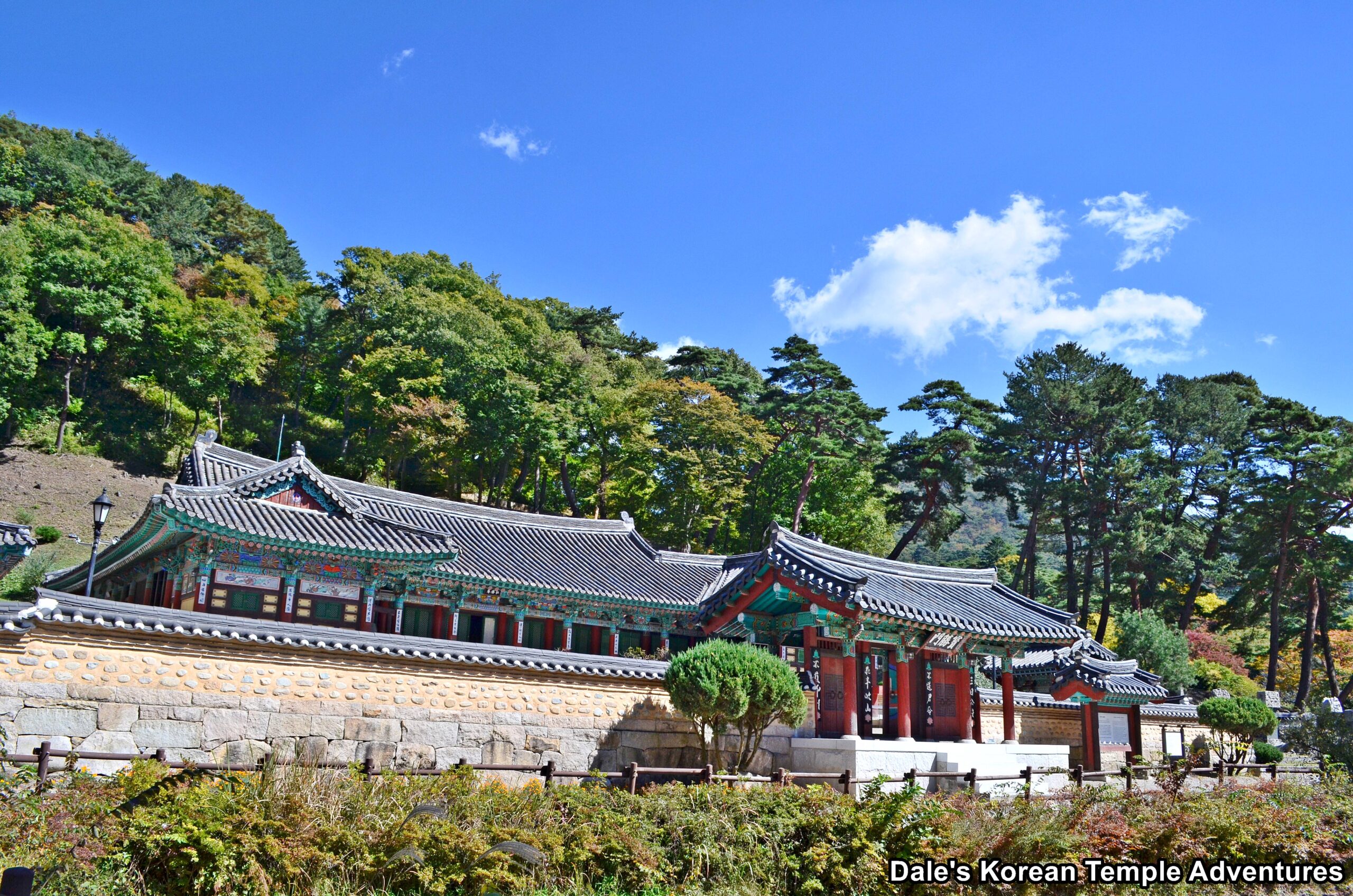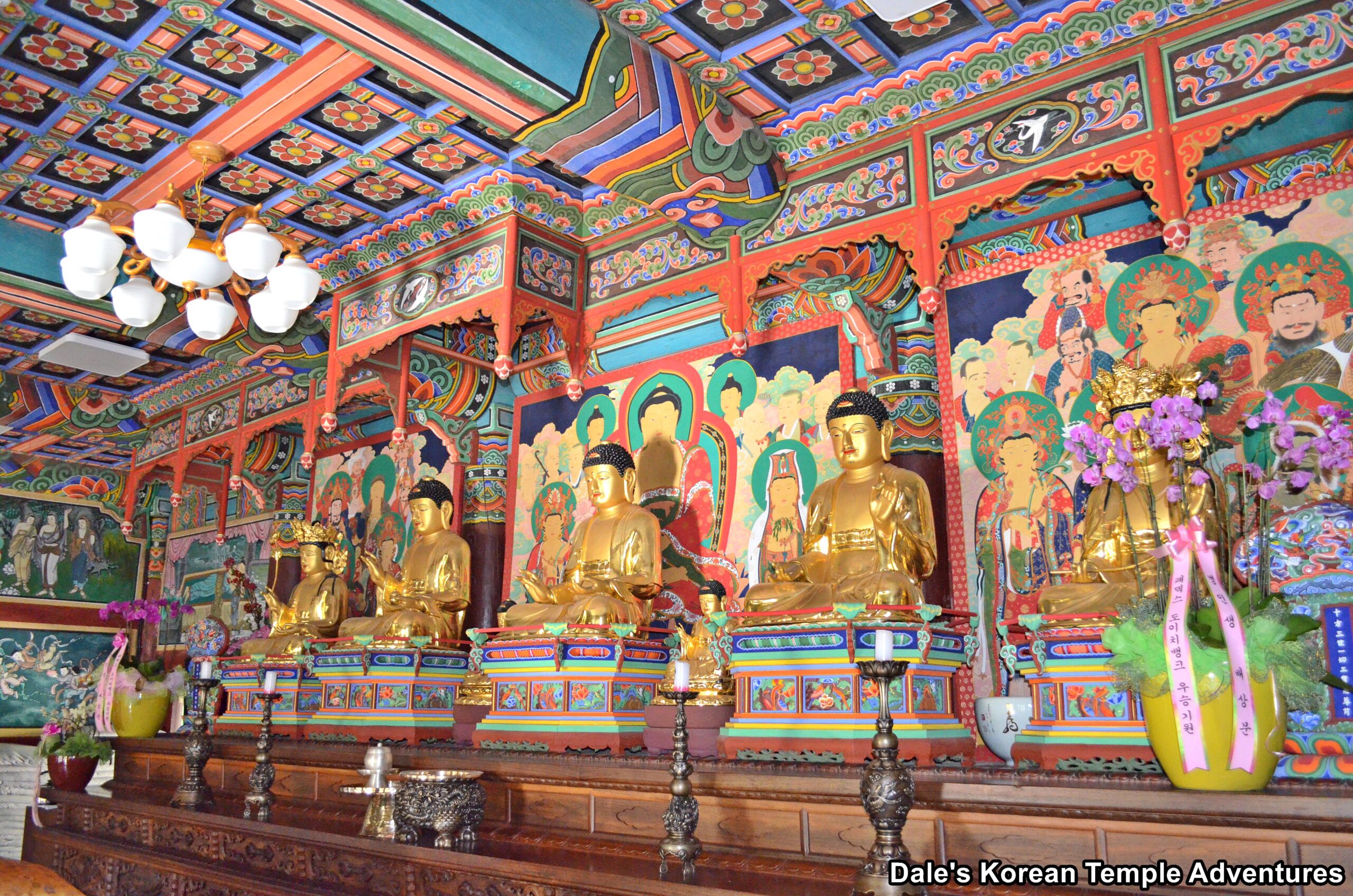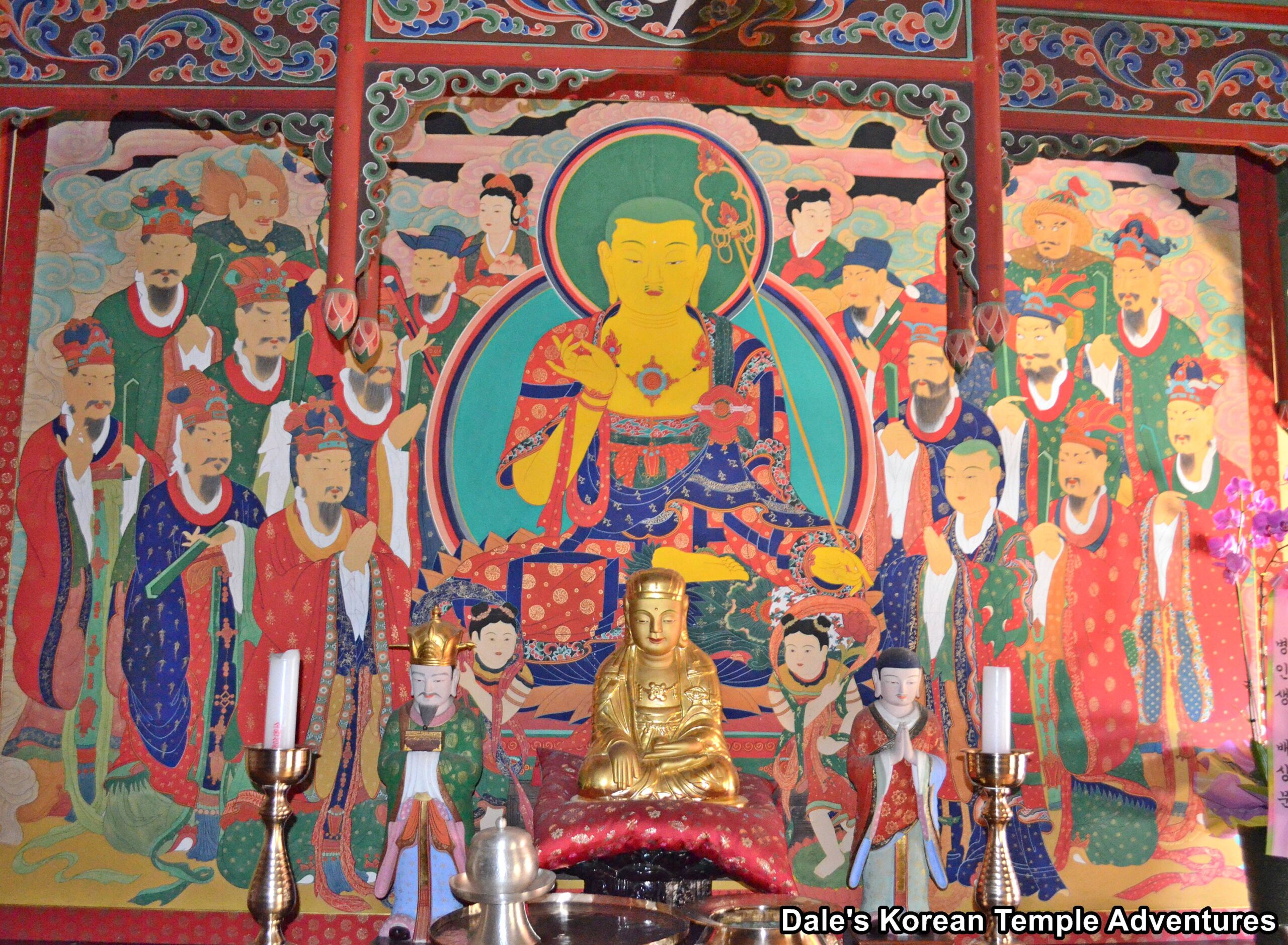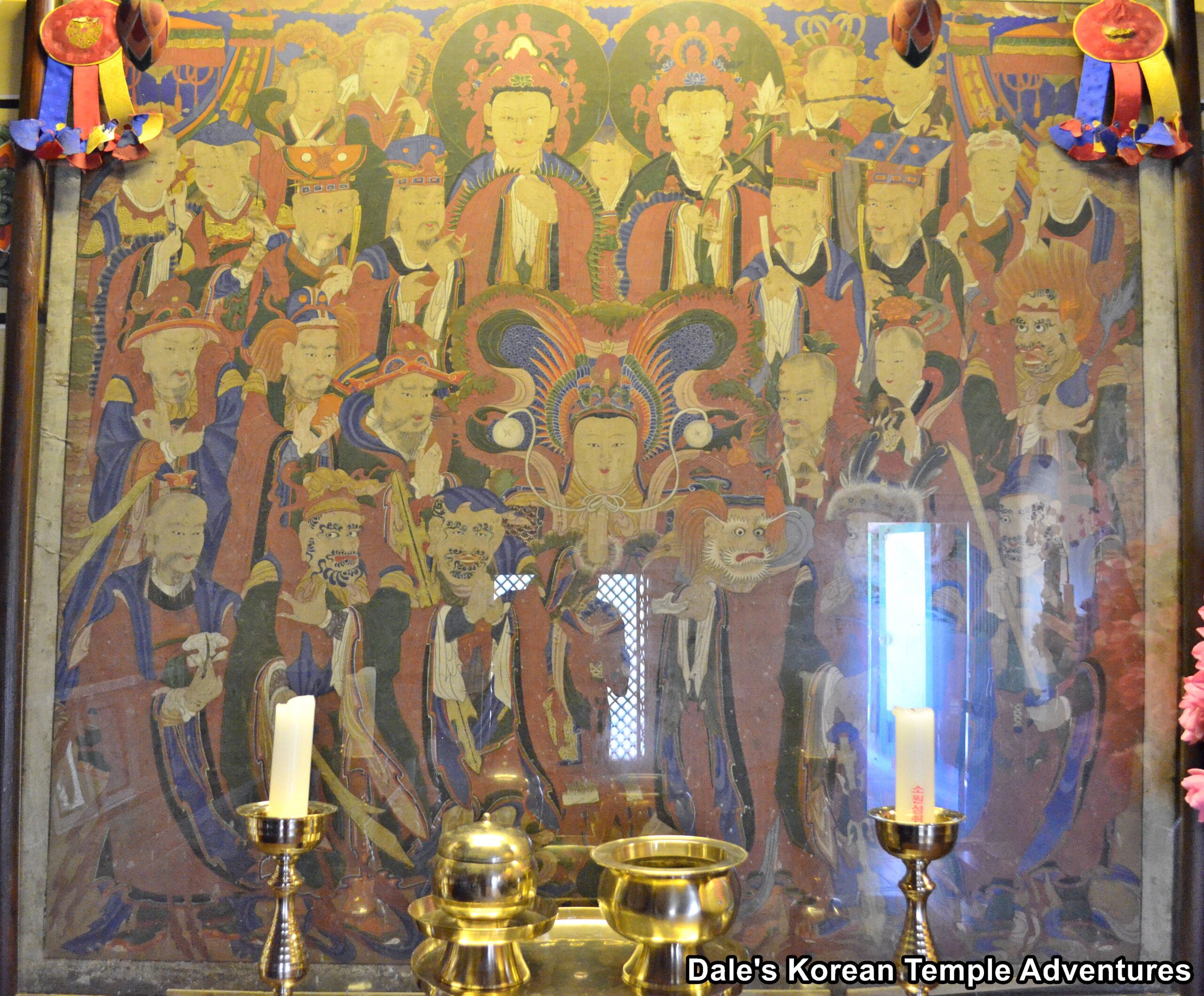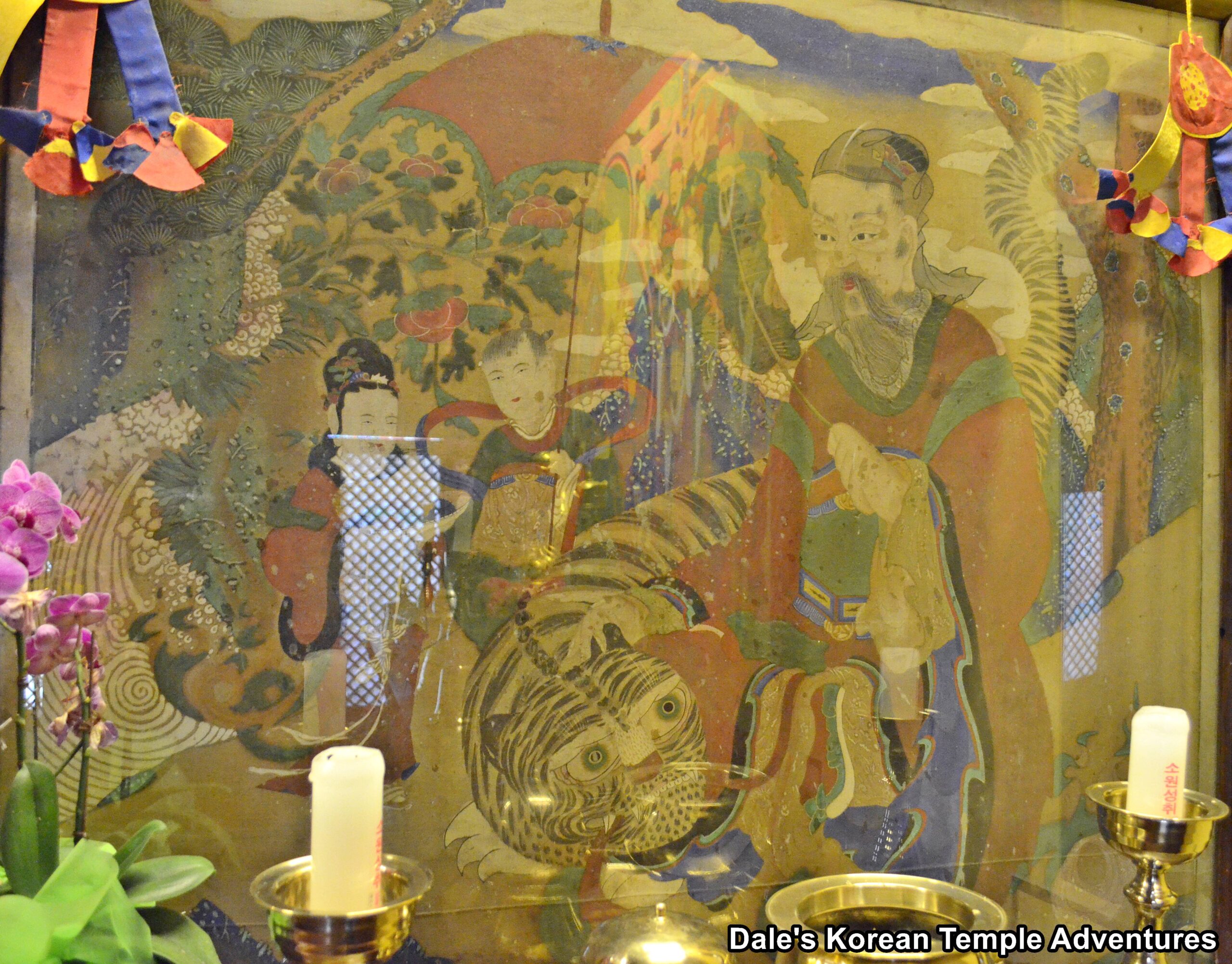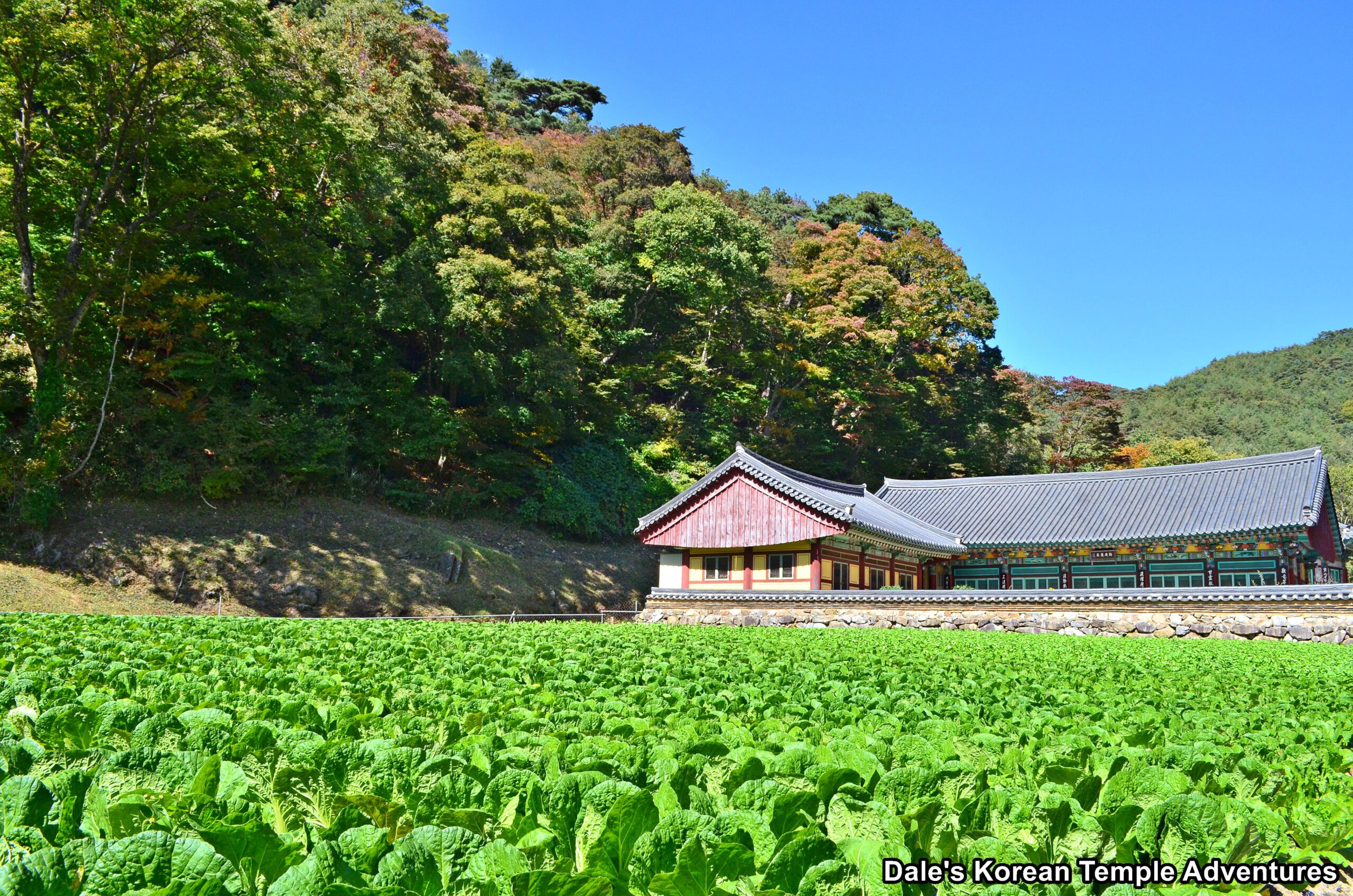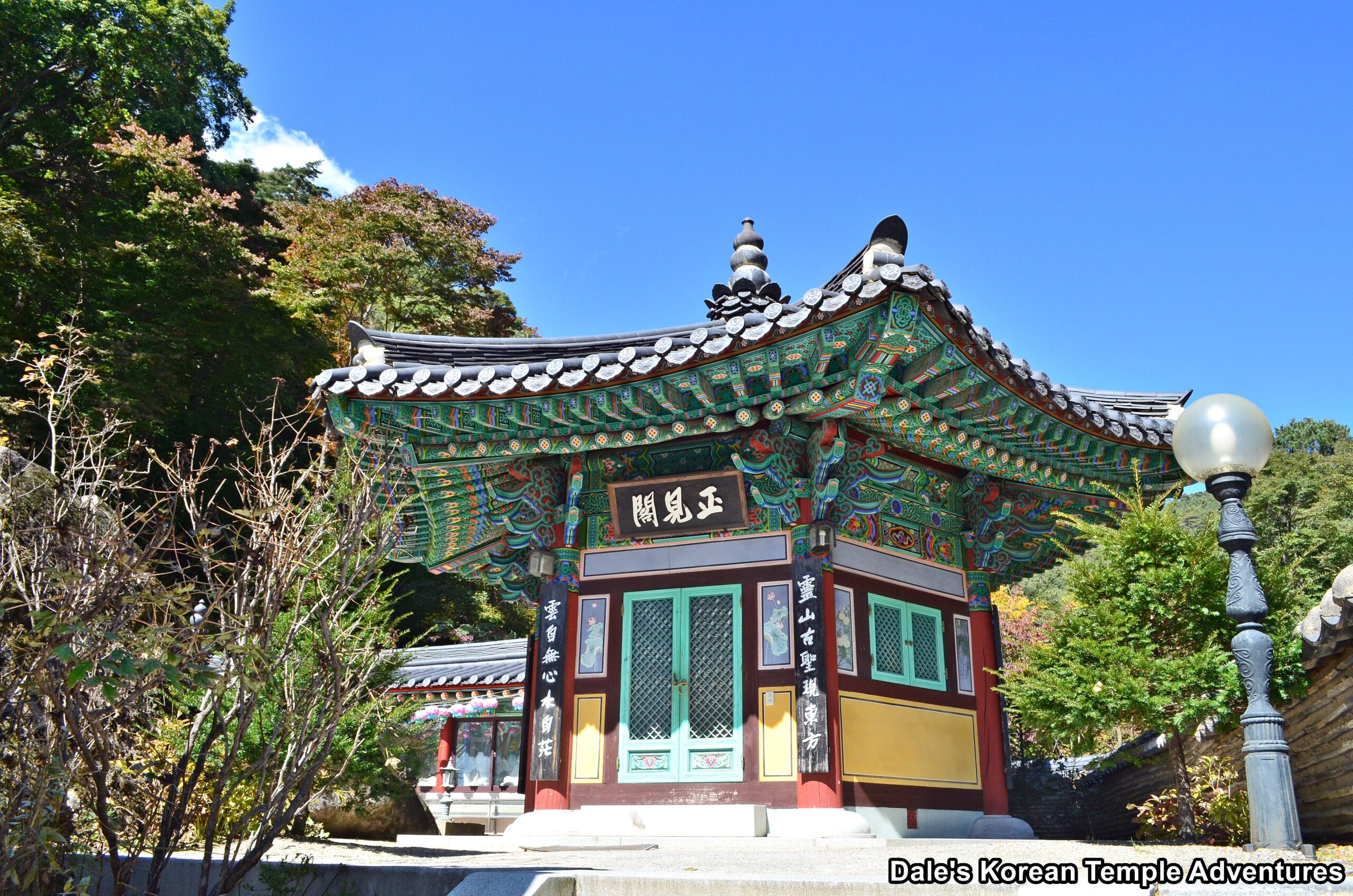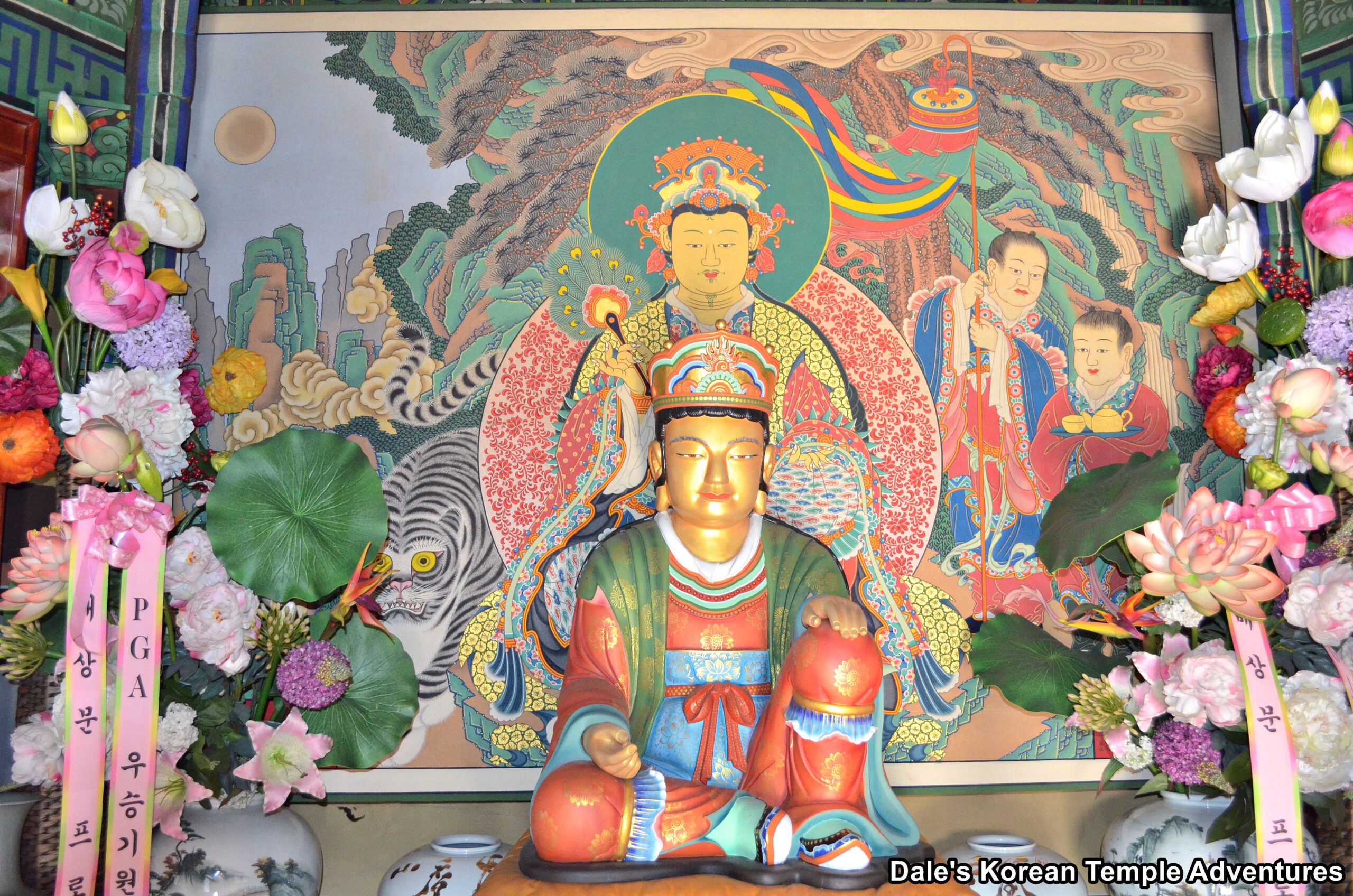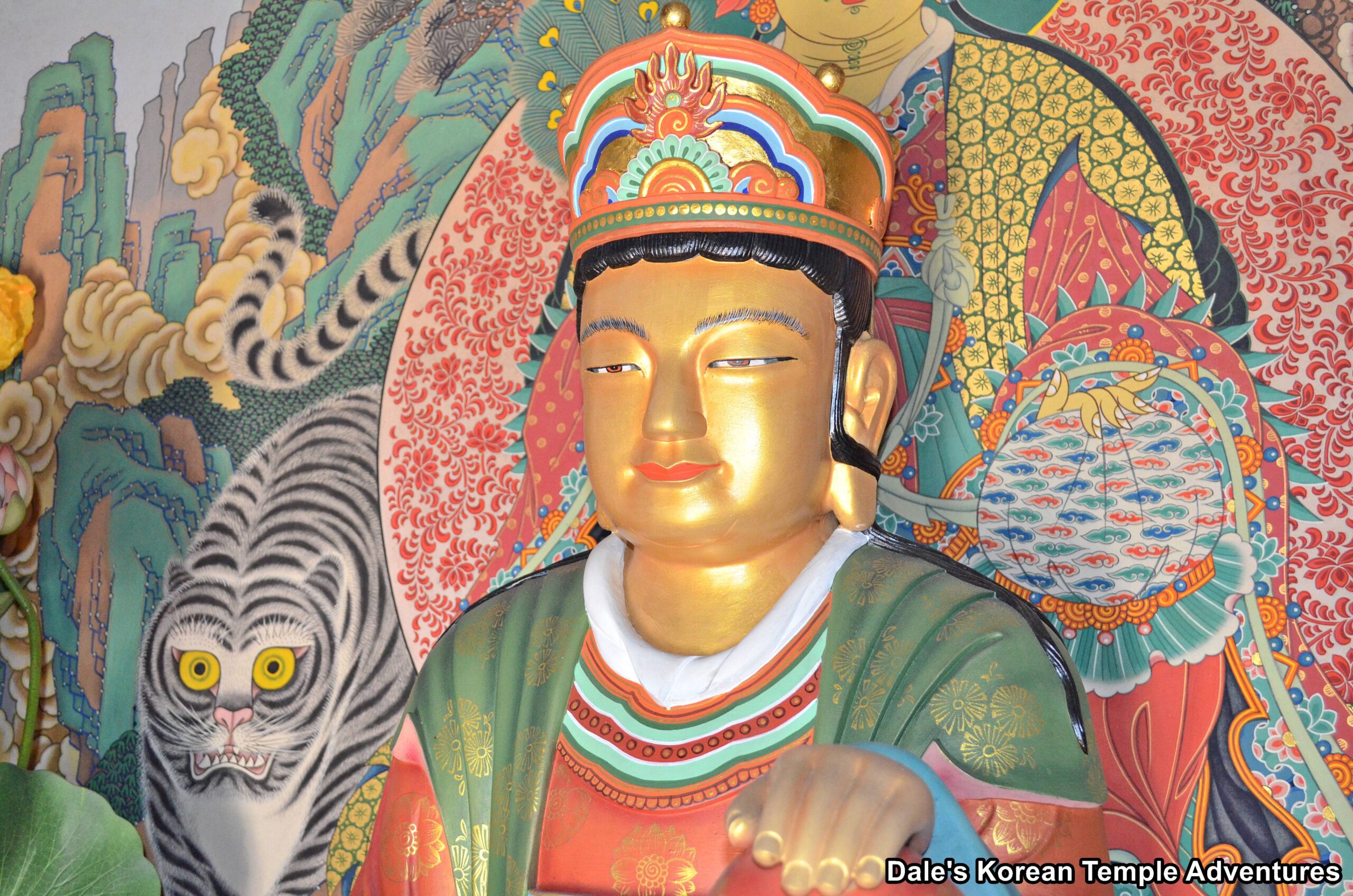Hongjeam Hermitage – 홍제암 (Hapcheon, Gyeongsangnam-do)

Hermitage History
Hongjeam Hermitage is located in the heart of Gayasan National Park just outside Hapcheon, Gyeongsangnam-do. The hermitage is directly associated with the famed Haeinsa Temple. The hermitage was first built in 1608 for the warrior monk Samyeong-daesa (1544-1610). The hermitage was built as a sign of appreciation for all of Samyeong-daesa’s efforts during the Imjin War (1592-1598) by King Seonje of Joseon (r. 1567 – 1608). Samyeong-daesa would spend the remainder of his days at Hongjeam Hermitage. The name of the hermitage comes from the posthumous title bestowed upon Samyeong-daesa. The posthumous title Samyeong-daesa received was that of Jatong Hongje-jonja. This title was given to Samyeong-daesa by King Gwanghaegun of Joseon (r. 1608 – 1623). And in 1614, the Yeongja-jeon Hall was added to the hermitage by the monk Hyegu to house the portraits of Seosan-daesa (1520-1604), Samyeong-daesa, and Yeonggyu (? – 1592).
In total, and before 1979, the hermitage had been rebuilt and renovated six times. Then in October, 1979, with special funds provided by Park Chung-hee (1917-79), Hongjeam Hermitage was completely dismantled and rebuilt. Additionally, Hongjeam Hermitage is home to two Korean Treasures. First, the hermitage itself is Korean Treasure #1300, while the Stupa of Buddhist Monk Samyeong and Stele at Hongjeam Hermitage are Korean Treasure #1301.
Hermitage Layout
Heading northwest past the Iljumun Gate at Haeinsa Temple, you’ll first come to a collection of stupas and stele. This collection is home to monks that once called Hongjeam Hermitage home, including Samyeong-daesa. There are four stupas to the left, while the five stele, including the one dedicated to Samyeong-daesa, are to the right. And Samyeong-daesa’s stele is quite easy to spot because not only does it stand in the centre of the nine stone monuments, but its body has been broken in the middle into four distinct pieces.
The stele dedicated to Samyeong-daesa was first erected in 1612. And the text of the stele was written by Heo Gyun (1569 – 1618), who is famously known for writing the classical Hong Gil-dong jeon (Tale of Hong Gil-dong). And the reason that the stele now appears in four fragmented pieces is because in 1943, during Japanese Colonization, the Japanese colonial administration ordered the police of Hapcheon to dismantle, and then destroy, Samyeong-daesa’s stele. The reason, and ultimate need for the stele’s destruction, was because the Japanese Colonial government believed that the inscription on the stele was seditious and that it could lead to nationalist sentiment in Koreans. Fortunately, the stele was eventually found. But when it was found, it was discovered to have been broken into four separate pieces. In 1958, the stele was repaired and re-erected on the same exact ground that it had been taken from and destroyed in 1943 at Hongjeam Hermitage. The stele is the oldest extant stone monument dedicated to Samyeong-daesa.
And to the right rear of these nine stupas and stele, including Samyeong-daesa’s, you’ll find a courtyard memorial for those that fought in the Imjin War (1592-1598). It’s also in this area, and flanking the neighbouring hillside, that you’ll find the stupa dedicated to Samyeong-daesa. It’s about twenty metres northeast of Hongjeam Hermitage. The stupa is shaped in the traditional bell-shape. The bell-shaped stone stupa sits atop a two-tier platform. And at the top of the stupa, you’ll find a lotus-shaped cintamani (wish-fulfilling jewel).
Now having passed by the stone artifacts, you’ll approach the main hermitage grounds. When you do finally enter the main hermitage grounds, you’ll be met by a collection of buildings. The ones to the far left are the monks’ facilities like the kitchen and dorms. To the right, on the other hand, is the Daeung-jeon Hall at Hongjeam Hermitage. Stepping inside the elevated main hall, you’ll first notice the well-populated main hall. In total, there are five statues resting on the main altar. In the centre of the five is a large, golden statue dedicated to Seokgamoni-bul (The Historical Buddha). This central image is joined to the left and right by Yaksayeorae-bul (The Buddha of the Eastern Paradise and the Medicine Buddha) and Amita-bul (The Buddha of the Western Paradise). To the right and left of these three central statues are Gwanseeum-bosal (The Bodhisattva of Compassion) and Daesaeji-bosal (The Bodhisattva of Wisdom and Power for Amita-bul). The interior walls to the Daeung-jeon Hall are lined with elaborate Palsang-do (The Eight Scenes from the Buddha’s Life Murals). Also, there hangs a mural that depicts three different incarnations of Dongjin-bosal (The Bodhisattva that Protects the Buddha’s Teachings) inside the main hall, as well.
To the left of the Daeung-jeon Hall, and tucked away, is the Myeongbu-jeon Hall at Hongjeam Hermitage. Upon immediately entering the Myeongbu-jeon Hall, you’ll notice a diminutive statue of Jijang-bosal (The Bodhisattva of the Afterlife) on the main altar. And there’s a colourful taenghwa (altar mural) backing Jijang-bosal. Hanging over top of the entry to the Myeongbu-jeon Hall, and slightly to the right, you’ll find a Gamno-do (Sweet Dew Mural). But the most interesting pair of murals hang to the left of the main altar inside the Myeongbu-jeon Hall. The first is an older Sanshin (Mountain Spirit) mural, while the other is a Shinjung Taenghwa (Guardian Mural).
Now, this is where Hongjeam Hermitage gets a bit more interesting. Exiting out of the first hermitage compound to the left rear, you’ll come out on the other side of the compound next to a rolling stream and a large cabbage patch field. It’s to the rear of this cabbage patch, and the buildings that back this field, that you’ll come to an amazing Sanshin-gak Hall. Resting inside this shaman shrine hall is a statue and painting dedicated to Sanshin (The Mountain Spirit). But what sets these two pieces of Buddhist art apart from others is that this Sanshin appears as a Bodhisattva. In this painting, you find the blending and blurring of traditional Korean spirituality with that of Buddhism. This artwork is a one-off. Nowhere else in Korea have I seen such a synthesis of shamanic and Buddhist artistic iconography. To the left of the Sanshin-gak Hall are two encased rows of Nahan (The Disciples of the Historical Buddha) statues. In addition, and among the rocks that jet out from the ground, you’ll find a pair of stone statues dedicated to Jijang-bosal and Yaksayeorae-bul to the right.
How To Get There
To get to Hongjeam Hermitage, you’ll first need to get to Haeinsa Temple. From the Hapcheon Intercity Bus Terminal, you’ll need to board a bus bound for Haeinsa Temple. The bus ride is about 5,000 won. From where the bus lets you off at Haeinsa Temple, you’ll need to find the trail that leads up to Haeinsa Temple. The walk is about one kilometre, and the trail starts to the left of the Haeinsa Temple museum. Arriving at Haeinsa Temple, and standing next to the Iljumun Gate, you’ll need to continue onward to your left. Head towards the neighbouring parking lot and cross over the narrow stone bridge, where you’ll finally catch your first glimpse of the stupas and stele at Hongjeam Hermitage. In total, the walk from Haeinsa Temple to Hongjeam Hermitage is about three hundred metres.
Overall Rating: 6/10
Hongjeam Hermitage is important for one very good reason, it’s the eternal resting place of the warrior monk, Samyeong-daesa. In fact, the entire hermitage was made for him for his retirement. And because of this, it’s home to two beautiful stone artifacts that are also Korean Treasures. In addition to all of this history, Hongjeam Hermitage is also home to one of the most unique images of Sanshin (The Mountain Spirit) in all of Korea. And in combination with the neighbouring Haeinsa Temple, Hongjeam Hermitage makes for quite an amazing trip to Gayasan National Park.
